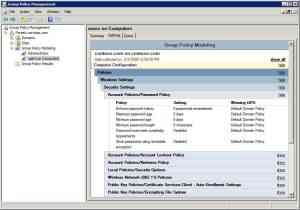
How do Group Policy settings affect Windows updates and installations?
Best Group Policy Settings You Need to Tweak to Control Windows As one of the most prevalent OSs, Windows operating systems are favored by malware and tend to be deployed with less-than-optimal management practices in many environments. This can be lessened by using the Group Policy settings which administrators often do. This post covers the top online Policy settings for managing Windows easily and improves your security with a better user experience.
What is Group Policy?
Group Policy Is a feature in the Windows operating system that allows administrators to set up and configure operating systems, applications, and user settings on supercomputers or servers_. With Group Policy, IT can enforce security settings, automate tasks and manage user permission to devices simultaneously.
Why Tweak Group Policy Settings?
Modifying Group Policy settings might bring you a wide range of benefits such as:
Additional Safety: Ensure that your most sensitive data stays secure with security standards and practices.
Better user experiences: You can customize the settings of applications and desktop environments, which in turn helps you to work more efficiently.
Lower IT Costs: With the automation of many administrative tasks, the need for constant IT support is greatly reduced.
Group Policy settings must be configured.
Some of the best Group Policy settings that can help you prevent Windows system control and protection are shown below:
1. Disable USB Access
To protect your data it is essential to avoid unauthorized access through USB devices. Use the following policy:
Computer Configuration Administrative Templates System Removable Storage Access
Policy: All Removable Storage classesDen y all access
2. Change your Windows Update Settings
To keep Windows Update updated and protected, modify the settings:
Computer Configuration Administrative Templates Windows Component.
3. Set Password Policies
Protecting accounts with strong password policies:
Computer Configuration Windows Settings Security Settings Account Policies Password Policy
Policies to Set:
Minimum password length
Complexity Requirements Password
4. Disable Command Prompt Access Control Windows
Disable access to the Command Prompt To prevent users from executing potentially harmful commands, have no fear!
User Configuration Administrative Templates System
Policy: Turn off cod access
5. Control User Account Control (UAC) Settings
Modifying UAC settings will prevent this from happening as well:
Computer Settings Windows Configuration Security Setting Local Policies Safety Options
Policy: User Account Control Run all administrators in Admin Approval Mode
6. Limit Internet Explorer Access
It makes spoofing and malware much harder: Govern browser behavior Reduce phishing/malware
User Configuration Administrative Templates Windows Components Internet Explorer
User Configuration Administrative Templates>> Windows Components Internet Explorer Remove programs and features.
7. Redirect Folders
Folder redirection makes user data easier to manage:
User Configuration Policies Windows Settings Folder Redirection
Applicable Group Policy, Redirecting the Documents folder
8. Set up Software Installation Policies
Manage software downloads on user machines.
Computer Configuration Policies Software Settings Software Installation
policy: Assign Applications to Devices
Advantages of Implementing these Group Policies
Security: Limit the risk of data breaches by restricting access
Improving Productivity: Streamlined flora and fauna of tasks keep users in the program.
Regulatory Compliance: To confirm legal data security requirements.
Practical Tips for Group Policy Management Control Windows
Keep flexible by reviewing policies at regular intervals and adjusting as the business does.
Try out policy changes in a sandboxed environment before you release them organization-wide.
Record all changes made to Group Policy as a reference for future compliance audits.
Successful Case Study
A mid-sized company, for which we used the above Group Policy settings to reduce some of their security threats. User accounts were being compromised with regularity in their previous state, often at the expense of time and resources for the company. Six months later, the company saw a nearly 70% function in security items through active directory password policies and the USB access section disabled.
Challenges and Solutions: Regionalize from First-Hand Experience
We faced an individual who was comfortable with the traditional system of having complete control of their systems while implementing a Group Policy setting at our earlier work experience. In response, we offered some better coaching¹ on the new policies. They eased any concerns with clear communication through an already established platform and so the transition was seamless.
Conclusion
Best Group Policy Settings You Need to Tweak to Control Windows Now, using Group Policy settings effectively can greatly improve the management and security of Windows systems. According to this article, implementing the best practices as discussed above leads organizations will protect their organization and make user experience even better. The bottom line is this, to be successful with Group Policy you are going to need ongoing monitoring and adjustment of the implementation as needs change.



Leave a Reply